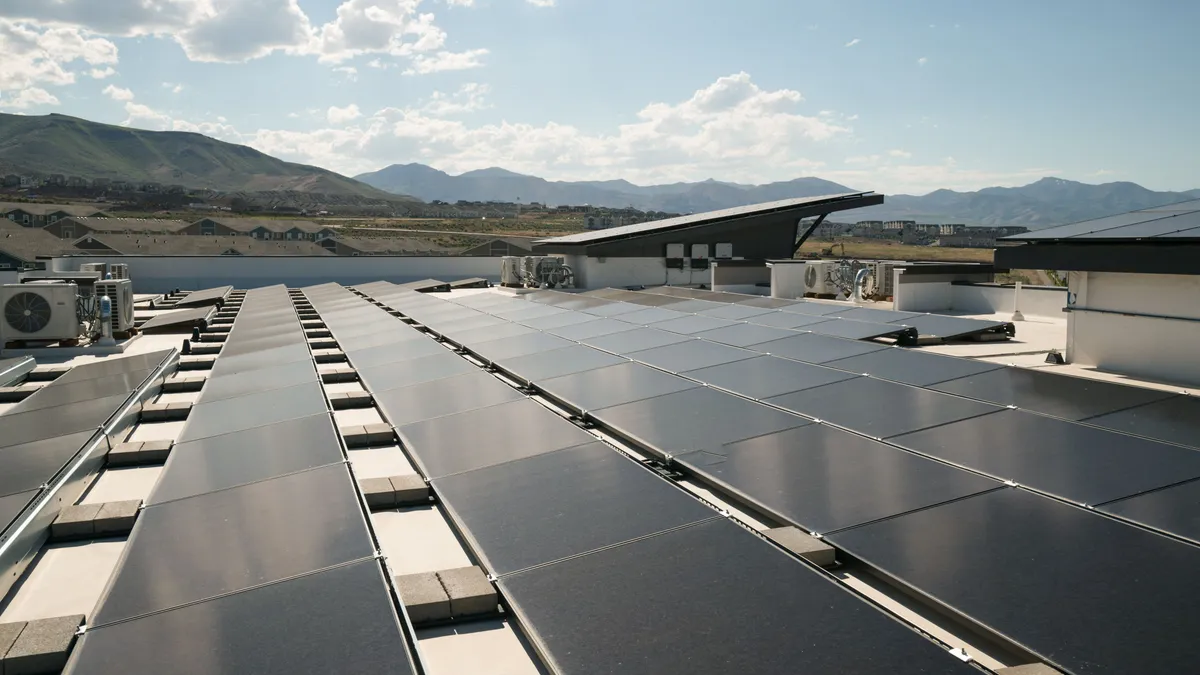Dive Brief:
- Virtual power plants have moved “well past pilot scale in North America,” with 33 GW of capacity operating or in development across 1,459 deployments participating in 321 market, utility and retailer programs, Wood Mackenzie said in a July 29 report.
- But enrolled VPP capacity accounts for only 19.5% of total distributed energy resource capacity, with legacy commercial and industrial demand response and residential thermostat programs accounting for a disproportionate share, WoodMac said.
- Unlocking substantially more VPP potential requires a combination of effective program design, supportive state and federal policy, reduced barriers to wholesale market participation and wider adoption of advanced metering and home energy management technologies, said Ben Hertz-Shargel, global head of grid edge at Wood Mackenzie and lead author on its North America Virtual Power Plant Market 2024 report.
Dive Insight:
The report shows a surprisingly brisk pace of VPP adoption across North America, with more deployments and monetized programs than expected, Hertz-Shargel said.
“There is a lot more activity than people would believe,” he said.
But the headline numbers belie deep challenges around market access. A significant number of the 321 monetized programs identified in the report are bilateral VPP capacity procurements between VPP providers and load-serving entities, like utilities or retail electricity providers. Unlike programs offered to all eligible customers within a load-serving entity’s or system operator’s territory, these bilateral arrangements are closed to public participation, Hertz-Shargel said.
Market access is especially challenging for residential customers, the report found. Residential capacity accounted for less than 9% of total VPP capacity bid into wholesale markets, which Hertz-Shargel said underscored the segment’s unrealized potential.
“The rules of wholesale markets are not conducive to residential customers,” he said.
FERC Order 2222 was expected to improve wholesale market access for energy end-users, but the reality of the more than three years since its implementation has been more complex, Hertz-Shargel said. Echoing barriers identified by Guidehouse Insights in a January paper, the WoodMac report pointed to nodal aggregation restrictions that limit the potential size of individual VPP aggregations, poorly defined bidding and qualification rules, device-level data restrictions that drastically increase telemetry costs for small-resource aggregations, and state regulatory barriers to grid export compensation.
These barriers hinder customer adoption of economic demand response, or participation in day-ahead wholesale markets, according to the report. Only 17% of VPP capacity participates in day-ahead markets, which are essential for balancing the grid on a daily basis, Hertz-Shargel said.
The report identified recent state policy developments that could improve market access for customers and expand opportunities for VPP aggregators. Among the most promising were a Colorado law requiring Xcel Energy to deploy by February a performance-based VPP pilot program that accommodates aggregators and prioritizes avoided transmission and distribution costs; a Maryland law requiring utilities to establish programs compensating aggregators and DER owners for distribution system support services; the lifting of longstanding bans on third-party demand response aggregation in Michigan and Missouri; and New York’s Grid of the Future initiative to promote deployment of flexible resources.
Federal legislation introduced earlier this year by Illinois Democrats Sen. Dick Durbin and Rep. Sean Casten would eliminate the Federal Energy Regulatory Commission’s “opt-out” rule that enables more than a dozen state bans on third-party demand response aggregation.
“It’s notable that [policymakers] are starting to act at the aggregation level rather than the DER incentive level,” Hertz-Shargel said. “When states have taken action, it has resulted in programs that really work.”
The most effective VPP programs involve multiple resource types, rather than a single technology like thermostats, WoodMac found. Due to utility-imposed restrictions, programs run by utilities and load-serving entities themselves are much less likely to accommodate multiple technologies than bilateral capacity deals between load-serving entities and aggregators, the report said.
“We need more standard-offer programs where there is a clear price per kilowatt-hour and [VPP operators] can get creative to bring in customers,” Hertz-Shargel said.
Wider adoption of commercial building and home energy management systems will enable effective programming — and participation in day-ahead energy markets — according to WoodMac.
So will broader adoption of advanced metering technology, which could improve VPP capabilities and performance in former “laggard” markets now seeing investment in AMI 2.0 equipment, like ISO New England, Hertz-Shargel said. Until then, VPP program managers can make do with device-level data where utilities allow it, he added.














